Most people are in the habit of applying sunscreen while outdoors, yet protecting our eyes from the harmful effects of UV is often forgotten. Excessive acute amounts of UV can lead to photokeratitis, or sunburn, to the important corneal structure at the front of the eye. Furthermore, cumulative exposure to UV over a lifetime can increase the risk of cataracts or macular degeneration as we age. Finally, certain types of skin cancers are commonly found around the eyes and eyelids due to chronic sun exposure.
Invest in a pair of quality sunglasses
- Ensure the lenses block out 99-100% of UV-A and UV-B light
- Are large enough, or have a wrapped curve around the face to block out as much light as possible from all directions
- Pick the right color for the job. Greys are best at reducing overall brightness and preserving true color, but browns are better for contrast in certain activities such as golfing and tennis. Let our experts guide you on the right choice for your lifestyle and visual demands.
Wear wide brimmed hats while outdoors
Our altitude in Calgary means we are closer to suns UV rays and have less atmosphere above us to filter them out. Although sunglasses and sunscreen are important, a good old hat provides another layer of protection, especially for little ones who just can’t keep their sunglasses on!
Contact Lenses and UV protection
Ensure your contact lens brand is one that provides UV protection (not all contacts do!)
- Most modern contact lenses provide some protection from UV, but some older brands do not. Ask your optometrist.
- New Acuvue®Oasys with Transitions™ lenses incorporate technology to darken when exposed to UV light, adapting seamlessly to all light levels. This is a great option when sunglasses are not feasible for certain outdoor sports like soccer and football.
- Remember, contact lenses still don’t shield the entire eye from UV, so sunglasses are still recommended to protect the delicate skin around the eyes
UV risk is the greatest when the sun is high in the sky, from 10am-2pm, and greater at higher altitudes. This exposure can double when UV rays are reflected by snow, which is why skiers are more prone to symptoms of photokeratitis (sunburn on the eyes) when forgetting to wear goggles. Those that enjoy Calgary’s beautiful backyard, the Rocky Mountains, need to be extra cautious of these risks.
Before the age of eighteen, we are exposed to roughly 80% of our lifetime UV since the young lens has no UV blocking capacity. So remember UV protection for your children to prevent eye diseases later in life!
Your Optometrist can recommend a variety of options to ensure your eyes are safe while making the most of our short summer months!
Thieden, E., et. al. (2004) Proportion of Lifetime UV Dose Received by Children, Teenagers, and Adults based on Time-Stamped Personal Dosimetry. J. Invest. Dermatol. 123 (6), p 1147-1150.

Dr. Patrick O’Brien, Optometrist
Dr. O’Brien has been with Mission Eye Care since 2009. With a strong foundation in both primary eye care and disease management, he continues to provide high quality eye health care to our patients.






